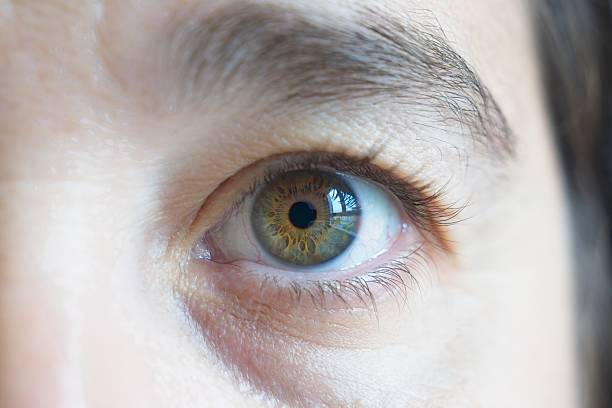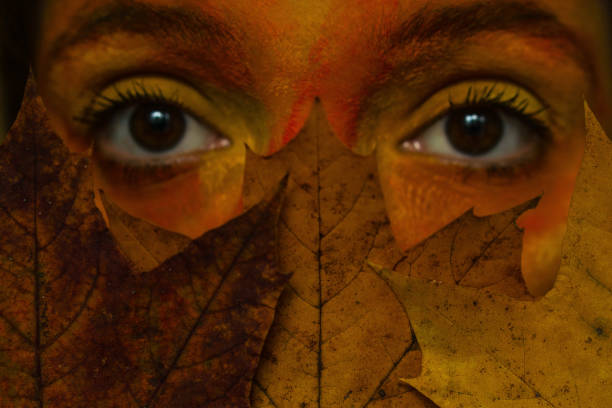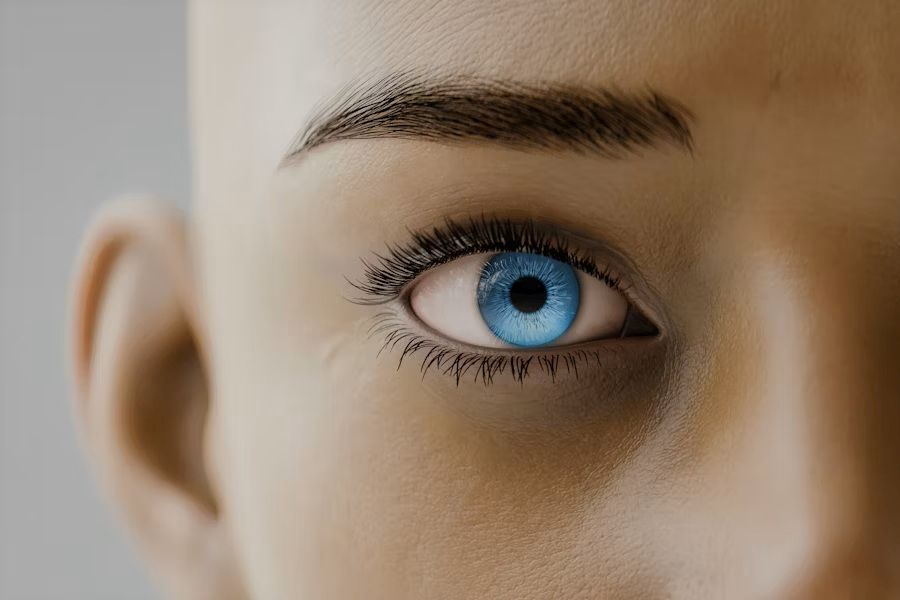Your Cart is Empty
The Human Eye: Understanding Iris and Pupil Size Variations

The human eye is a marvel of biological engineering, capable of perceiving an incredible range of colors, shapes, and movements. At the heart of this intricate organ lie two fascinating structures: the iris and the pupil. These components work in harmony to regulate the amount of light entering the eye, adapting to various environmental conditions and playing a crucial role in our visual perception. In this article, we'll delve into the captivating world of iris and pupil size variations, exploring their anatomy, function, and the factors that influence their behavior.
Table of Contents
-
The Anatomy of the Human Eye
-
Understanding Iris Structure and Function
-
Pupil Size and Its Significance
-
Factors Influencing Iris and Pupil Size Variations
-
The Role of Light in Eye Adaptations
-
Health Conditions Affecting Iris and Pupil Size
-
Capturing Eye Variations in Photography
-
Iris and Pupil in Eyeball Art
-
Frequently Asked Questions about Iris and Pupil Size
The Anatomy of the Human Eye
The human eye is a complex organ composed of various structures working together to enable vision. At the forefront of the eye is the cornea, a transparent layer that helps focus light. Behind the cornea lies the iris, a colored muscular structure surrounding the pupil. The pupil is the dark opening at the center of the iris that allows light to enter the eye.
Behind the iris and pupil is the lens, which further focuses light onto the retina at the back of the eye. The retina contains photoreceptor cells that convert light into electrical signals, which are then transmitted to the brain via the optic nerve.
The iris and pupil play a crucial role in regulating the amount of light that enters the eye, acting as a natural aperture system. This regulation is essential for maintaining optimal visual acuity across various lighting conditions.
Understanding Iris Structure and Function
The iris is the colored part of the eye that surrounds the pupil. Its primary function is to control the size of the pupil, thereby regulating the amount of light that enters the eye. The iris is composed of two main muscle groups:
-
Sphincter muscles: These circular muscles constrict the pupil, making it smaller.
-
Dilator muscles: These radial muscles dilate the pupil, making it larger.
The iris contains pigmented cells called melanocytes, which determine the eye color. The amount and type of melanin present in these cells create the wide variety of eye colors we see in humans, ranging from light blue to dark brown.
The iris's ability to adjust its size is crucial for maintaining visual clarity and protecting the sensitive structures within the eye. In bright light, the iris constricts to reduce the amount of light entering the eye, while in dim light, it dilates to allow more light in.
Pupil Size and Its Significance
The pupil is the dark circular opening at the center of the iris. Its primary function is to allow light to enter the eye and reach the retina. The size of the pupil can vary significantly, ranging from about 2mm in diameter when constricted to 8mm when fully dilated.
Pupil size is not static; it constantly adjusts in response to various stimuli. The primary factor influencing pupil size is light intensity. In bright light, the pupils constrict to reduce the amount of light entering the eye, protecting the retina from damage and improving visual acuity. In dim light, the pupils dilate to allow more light in, enhancing our ability to see in low-light conditions.
Interestingly, pupil size can also be influenced by emotional states, cognitive processes, and certain medications. For example, pupils tend to dilate slightly when a person is excited, afraid, or experiencing pain.
Factors Influencing Iris and Pupil Size Variations
Several factors can affect the size and behavior of the iris and pupil:
-
Light intensity: As mentioned earlier, this is the primary factor influencing pupil size.
-
Age: As we age, our pupils tend to become smaller and less responsive to light changes.
-
Emotional state: Strong emotions can cause pupil dilation.
-
Cognitive load: Mental effort or concentration can lead to slight pupil dilation.
-
Medications: Certain drugs can affect pupil size, either dilating or constricting them.
-
Alcohol and recreational drugs: These substances can also influence pupil size and reactivity.
-
Medical conditions: Various eye and neurological conditions can affect iris and pupil function.
Understanding these factors is crucial for interpreting pupil behavior in both medical and social contexts.
The Role of Light in Eye Adaptations
Light plays a fundamental role in shaping the behavior of the iris and pupil. The eye's ability to adapt to different light conditions is known as light adaptation. This process involves two main mechanisms:
-
Pupillary light reflex: This is the rapid constriction or dilation of the pupil in response to changes in light intensity.
-
Retinal adaptation: This involves changes in the sensitivity of photoreceptor cells in the retina.
When we move from a bright environment to a dark one, our pupils initially dilate rapidly. This is followed by a slower process of retinal adaptation, where the photoreceptors become more sensitive to light. The reverse occurs when moving from darkness to light.
This adaptive process allows us to maintain visual acuity across a wide range of lighting conditions, from bright sunlight to near-darkness. It's a testament to the remarkable flexibility and efficiency of the human visual system.
Health Conditions Affecting Iris and Pupil Size
Several health conditions can affect the size and function of the iris and pupil:
-
Anisocoria: This condition is characterized by unequal pupil sizes and can be caused by various factors, including nerve damage or certain medications.
-
Horner's syndrome: This rare condition affects one side of the face and can cause a smaller pupil, a drooping eyelid, and reduced sweating.
-
Adie's tonic pupil: This condition affects the pupil's ability to constrict, often resulting in one pupil being larger than the other.
-
Iritis: Inflammation of the iris can affect its ability to function properly, potentially leading to changes in pupil size and reactivity.
-
Glaucoma: This group of eye conditions can affect the optic nerve and may influence pupil size and reactivity.
If you notice persistent changes in your pupil size or reactivity, it's important to consult an eye care professional for a thorough examination.
Capturing Eye Variations in Photography
Eye photography is a fascinating subset of portrait photography that focuses on capturing the intricate details of the human eye. The iris and pupil play a central role in these images, often creating stunning patterns and colors.
When photographing eyes, consider the following tips:
-
Use macro lenses for close-up shots
-
Ensure proper lighting to highlight iris details
-
Experiment with different angles to capture unique reflections
-
Pay attention to focus, ensuring the iris and pupil are sharp
-
Consider post-processing to enhance colors and contrast
Eye photography can reveal the incredible diversity of human eye colors and patterns, showcasing the unique beauty of each individual's eyes.
Iris and Pupil in Eyeball Art
The human eye has long been a source of inspiration for artists. The iris and pupil, with their intricate patterns and symbolic significance, often feature prominently in eyeball art.
Artists may choose to emphasize:
-
The detailed patterns and colors of the iris
-
The contrast between the dark pupil and the surrounding iris
-
The reflection of light on the surface of the eye
-
Exaggerated or stylized representations of pupil dilation
Eyeball art can range from hyper-realistic drawings to abstract interpretations, each offering a unique perspective on the beauty and complexity of the human eye.
Frequently Asked Questions about Iris and Pupil Size
-
Can iris color change over time? While dramatic changes are rare, subtle shifts in iris color can occur due to aging, certain medications, or health conditions.
-
Why do some people's pupils appear to be different sizes? Slight differences in pupil size (anisocoria) can be normal. However, significant or sudden changes should be evaluated by a healthcare professional.
-
Can emotions really affect pupil size? Yes, strong emotions can cause slight pupil dilation, although this effect is usually subtle.
-
Is it possible to control pupil size voluntarily? While we can't directly control our pupils, certain meditation techniques may indirectly influence pupil size through relaxation.
-
How quickly do pupils react to light changes? The pupillary light reflex is quite rapid, typically occurring within 0.2 to 0.5 seconds of a change in light intensity.
The human eye, with its intricate iris and adaptive pupil, is a testament to the marvels of biological evolution. Understanding the factors that influence iris and pupil size variations not only enhances our appreciation of this complex organ but also provides valuable insights into our overall health and well-being. Whether you're an aspiring eye photographer, an artist seeking inspiration, or simply curious about the wonders of human anatomy, the world of iris and pupil variations offers endless fascination.
As we continue to study and marvel at the complexities of the human eye, we gain a deeper appreciation for the intricate mechanisms that allow us to perceive and interact with the world around us. The next time you look into someone's eyes or catch a glimpse of your own reflection, take a moment to appreciate the remarkable structures that make vision possible.
Leave a comment
Comments will be approved before showing up.




